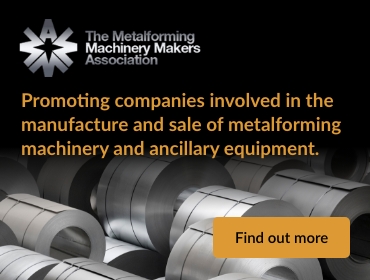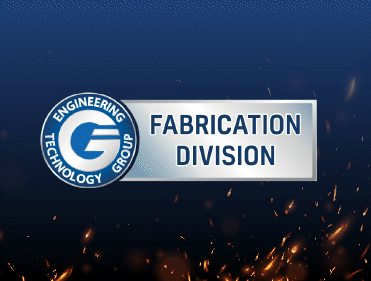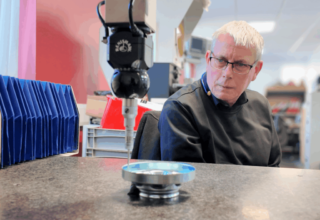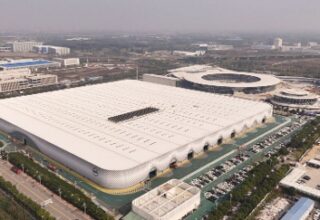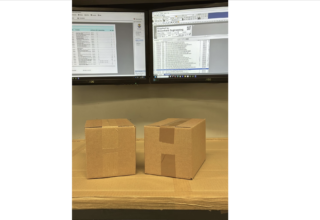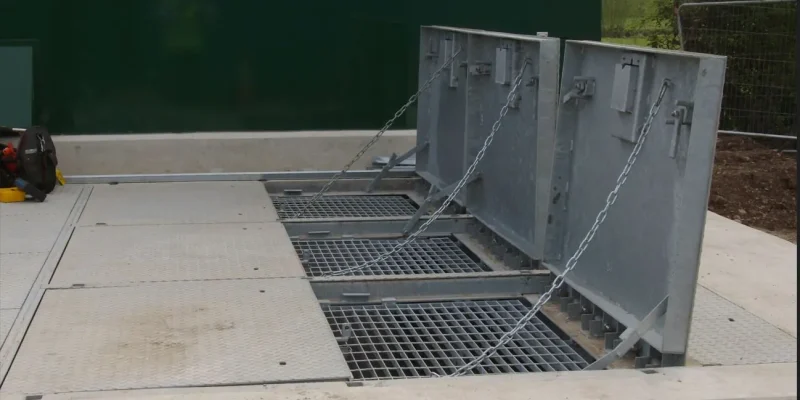
Modern access covers play an important role in long-term drainage infrastructure planning. Not only are they designed to protect what’s beneath, but they also need to perform well under surface conditions that significantly change over time. All too often, surface components such as access covers and drain covers are treated as short-term fittings rather than long-term sustainable solutions.
When access covers fail, it causes widespread disruption and can incur significant extra costs while also putting public safety at risk. That’s why getting the specifications and load variations right from the start is so important. Access covers need to handle the pressures of their environment, and this means being adequate enough to resist corrosion and heavy traffic. At FSP, we’re all about futureproofing your infrastructure to provide long-term resilience and reliable, modern access covers that remove the need for constant upkeep and maintenance.
Designing for Decades: Why Durability Matters
While every drainage project has a lifespan built into it, its overall longevity is only as strong as its weakest component. When access covers aren’t built to last, they become a recurring failure point, which can lead to increased maintenance costs, repeated site visits, and safety concerns that could have been avoided from the outset.
Unfortunately, the consequences of failure aren’t just limited to the cover itself and road closures; asset damage, and liability risks all add up quickly. When access points are poorly matched to traffic loadings or installed without the right frame depth, it’s usually the surrounding structure that suffers first.
Compliance with BS EN 124 matters. We can’t stress this enough. Not only does this standard ensure that each cover matches its intended application, but it also ensures that the correct load classes are rated to withstand specific pressures. Selecting the correct class now helps avoid expensive retrofitting down the line.
Galvanised steel construction to BS EN ISO 1461 standard plays a crucial role in the long-term future of your drainage infrastructure. Proper zinc coating significantly improves corrosion resistance, particularly in coastal, roadside, or chemically exposed environments. And we’re not talking about overengineering here, we’re simply highlighting that getting durability right the first time will help avoid the costs of doing it twice.
Supporting Sustainability and Whole-Life Cost Savings
When access covers have to be replaced every few years due to corrosion or poor fit, it’s not just a maintenance issue; it’s an environmental and financial issue. The resources, transport, labour, and disruption involved in repeated replacements all carry a cost.
For long-term, reliable covers, you need to be using the right materials. Galvanised steel, manufactured to BS EN ISO 1461, offers excellent corrosion resistance and holds up well in exposed environments. When specifications are correctly calculated from the start, access covers made from this steel can significantly extend replacement cycles and help cut down on waste. It’s a small choice that makes a big difference across the lifecycle of the system.
Custom-made access covers also reduce the likelihood of poorly fitted installations, which can often lead to early failure or the need for costly repairs. FSP handles design and fabrication in the UK, so you’re not relying on long lead times or high-emission imports. That’s less risk to your programme and less of a carbon footprint left in the supply chain.
When thinking about sustainability, the cheapest option upfront is rarely the most cost-effective over time.
Supporting Sustainability and Whole-Life Cost Savings
You can’t achieve long-term sustainability without first considering durability. If access covers start failing five years in, you’re not just looking at replacement costs; you’re dealing with extra materials, wasted labour, and an added carbon footprint due to increased transport and waste disposal. Multiply that across an entire project, and it quickly removes the wider sustainability goals that infrastructure projects are built around.
Again, getting the spec right from the start matters. Higher-grade materials like galvanised steel don’t just offer better performance, they also reduce the need for maintenance, which lowers the overall lifecycle cost. When access covers are built with the correct load rating and finish to match site conditions, they’re less likely to crack, corrode or shift under pressure.
FSP’s products are manufactured entirely in the UK under strict quality control. That cuts down on unnecessary freight, avoids delays from overseas supply chains, and means less embodied carbon baked into every unit. And because each cover is made to last, the need for early replacement is practically removed and in doing so, helps projects to stay compliant, cost-effective, and in line with Environment Agency guidance on sustainable drainage systems.
Adaptable Solutions for Evolving Infrastructure
Infrastructure isn’t static. Over time, load requirements increase, layouts shift, and in some cases, monitoring systems are added that weren’t in the original plan. That’s why flexibility should be built into drainage components from the outset, particularly when it comes to access covers.
At FSP, we design covers to meet current site demands, while also giving room for future adaptability. That might mean accommodating unusual chamber dimensions on retrofit projects or factoring in frame depths and fixings that allow for straightforward upgrades later on. In many cases, we’ve built covers that can be removed and replaced with heavier-duty options without needing to rework the surrounding structure.
It’s not just about physical dimensions either. We’re seeing more demand for access points that allow monitoring technology to be integrated, whether it’s for water levels, flow rates, or remote diagnostics. With custom fabrication, we can build those features in from the start, so you’re not retrofitting or drilling into finished products further down the line.
Everything we do is handled in-house, meaning the design can evolve alongside the site. Whether you’re dealing with a long-term master plan or a phased infrastructure rollout, having access covers that adapt over time makes future upgrades easier, cheaper, and far less disruptive.
Use Cases: Long-Term Planning in Action
Futureproofing matters most in places where downtime simply isn’t an option. On major road schemes, for example, a failed access cover can cause all kinds of issues. It means lane closures, traffic delays, and added costs for rework and traffic management come into play, and that’s why heavy-duty load ratings and long-life materials are non-negotiable from the start.
Industrial estates are another prime example. These sites see constant vehicle movement, often with forklifts or HGVs running over the same access points daily. If those covers aren’t up to spec, it’s only a matter of time before they fail. Selecting the right product at the outset helps avoid that repeat cycle of replacement and disruption.
In urban regeneration projects or public spaces, the challenge shifts towards aesthetics and integration with sustainable drainage systems. Here, recessed access covers that match paving finishes or allow water to flow become essential. It’s not just about the cover blending in visually; it’s about long-term functionality in a high-use, sensitive environment.
Wherever future planning is a priority, the right access cover can make the difference between a one-time install and an ongoing maintenance headache.


